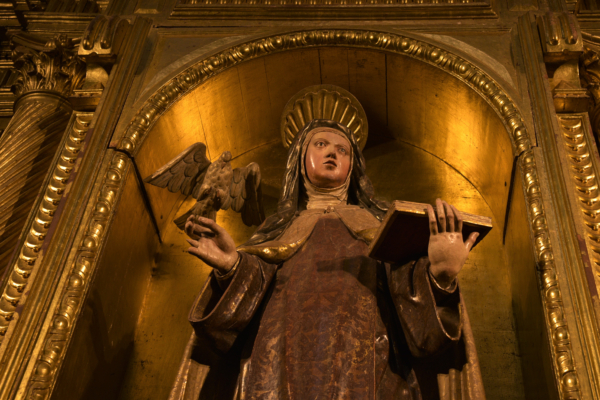Recently, the Diocese of Avila in Spain reopened the coffin of the 16th-century saint, St. Teresa of Avila, and discovered that her body was remarkably well-preserved, without any signs of decay, mirroring her appearance from a century ago, which was astonishing.
According to reports from the Catholic News Agency on August 29, St. Teresa of Avila was born in Spain in 1515 and was a nun of the Discalced Carmelite Order. She passed away in 1582, with over 400 years having passed since then.
Father Marco Chiesa, who participated in the coffin reopening, described that St. Teresa’s body was exceptionally well-preserved, similar to how it was during the previous opening in 1914. At that time, black and white photographs were taken.
Chiesa stated that comparing the current state to the black and white photographs, the uncovered parts of her face and feet remained the same as a century ago. “There is no color, no flesh tone, as the skin has mummified, but you can see, especially in the center of the face. A professional doctor can almost clearly see the face of St. Teresa.”
The Avila Diocese explained that the coffin reopening was carried out based on a request made by Bishop Luis Retana of the Salamanca region to the Vatican on July 1, authorized by Pope Francis. The main purpose was to study her heart, hand, and arm to gain further insights into her health condition before her passing.
The church mentioned that to access St. Teresa’s body, they first had to remove the marble slab covering her tomb and then move her silver coffin to a room set up for research purposes. It was only in the presence of a scientific medical team and members of the church court that the coffin was opened.
The church stated that they needed 10 keys to open St. Teresa’s tomb and coffin. Three keys were used to open the outer railing; another three to open the marble tomb; and the remaining four to open the coffin. These keys were kept in several different locations, including Rome.
The coffin reopening process was divided into three stages–the first stage involved priests and nuns of the Carmelite Order opening the coffin, with experts from Madrid taking photographs and conducting X-ray examinations. The second stage would transport the coffin to a laboratory in Italy for several months of research and scientific analysis. The third stage would focus on better preservation methods for the body.
Before finally sealing the tomb, the church would allow a proper period for people to pay respect to the holy relics of St. Teresa of Avila.
Chiesa mentioned that in her final years, St. Teresa faced physical ailments, which she herself had described. Despite her bodily limitations, she managed to reach Alba de Tormes on the banks of the Tormes River, where she passed away. Despite her bodily challenges, she continued to push forward.
He said, “Sometimes, when you look at a body, you discover much more than what this person said.”
St. Teresa of Avila was canonized as a saint by Pope Gregory XV in 1622, 40 years after her passing. In 1970, Pope Paul VI declared her a “Doctor of the Church,” the first woman to receive such a title.

